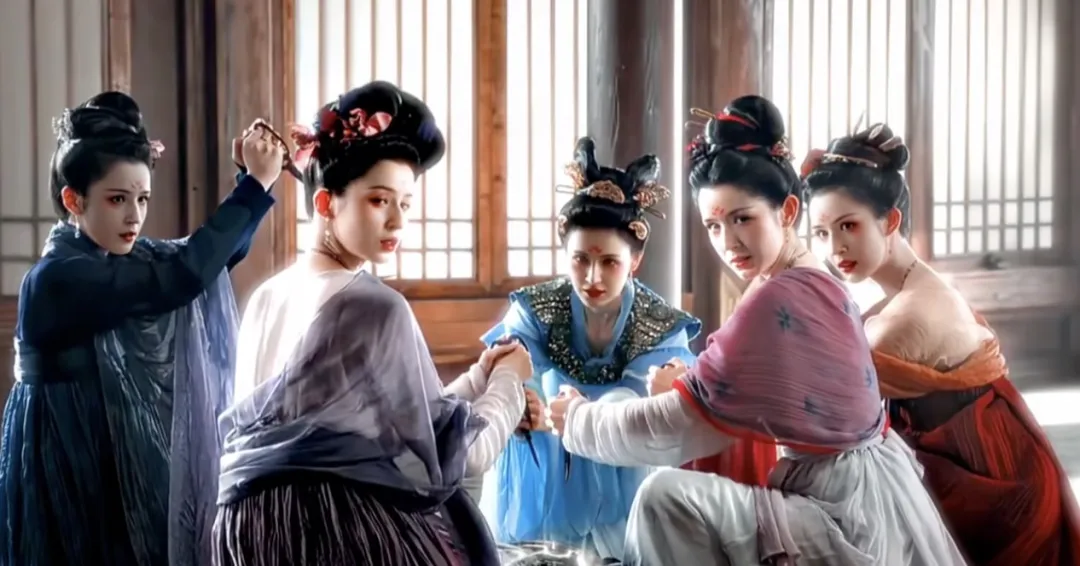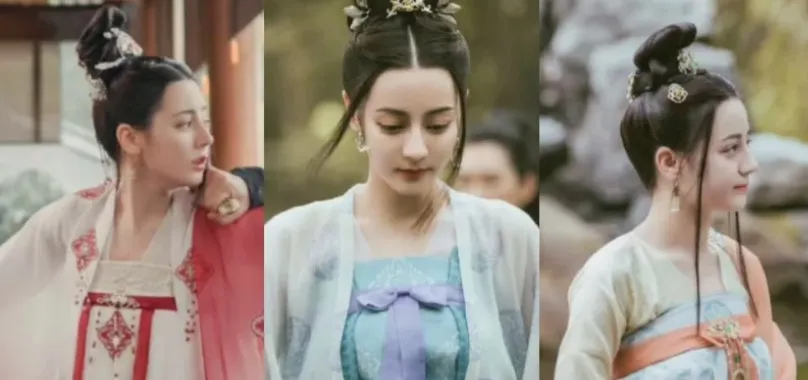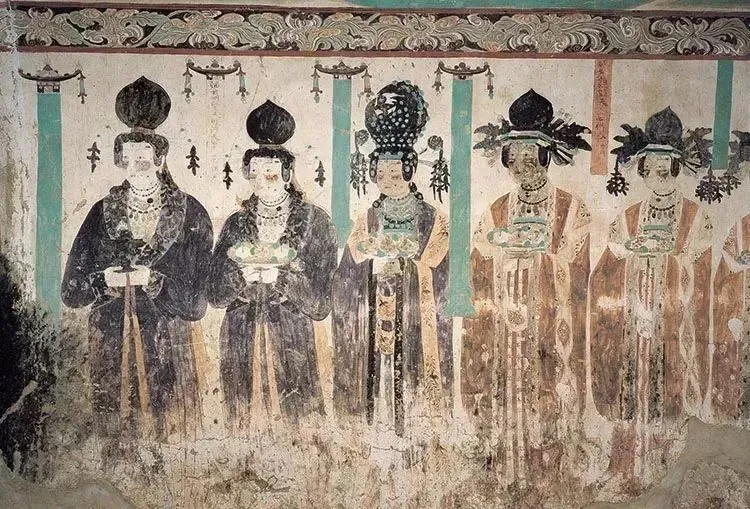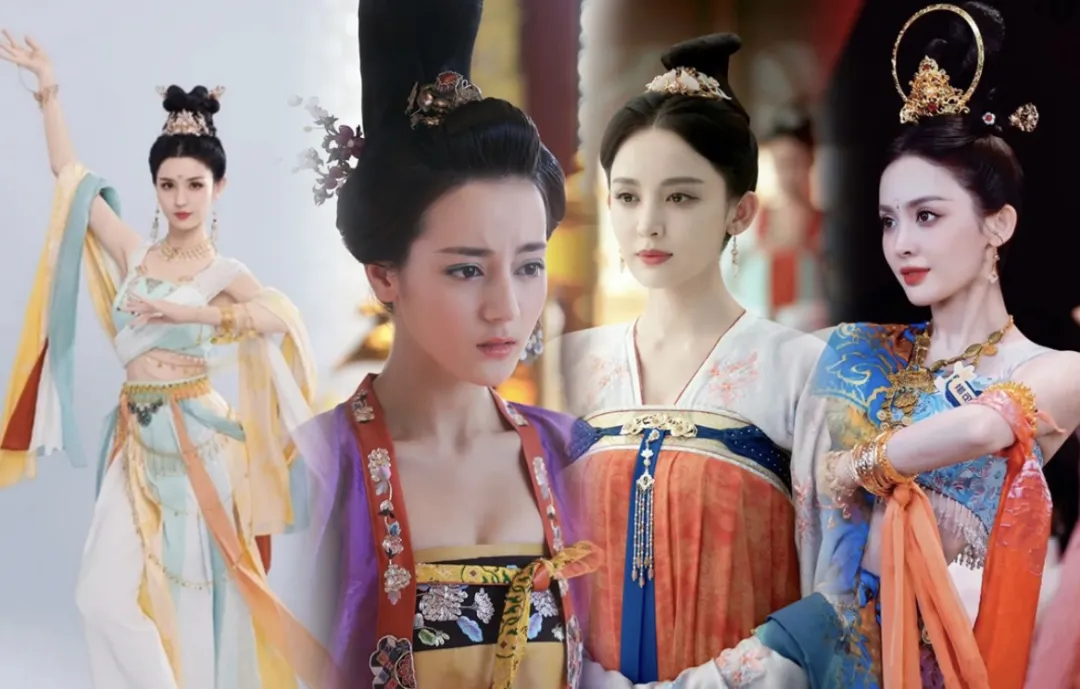In the ancient - costume drama The Longest Promise, Hanikiz's Tang - style makeup was truly impressive. Considering her previous Dunhuang - themed looks, netizens exclaimed that she was the 'Chosen One of the Tang Dynasty'. Why do we have such a strong impression of this kind of makeup? Let me start with the conclusion. We often say that the 'Hu style' prevailed in the Tang Dynasty. But where did this 'Hu style' come from? Looking back at this trend, the Uyghur people are a prominent example. The Uyghurs were originally called 'Huihe'. Through historical development and evolution, they eventually became the Uyghur ethnic minority we know today.
The Uyghurs have distinct facial features, with thick eyebrows, big eyes, and three - dimensional facial structures, along with a strong and healthy build, which gives people a strong sense of the 'Hu style'. The historical influence of the Uyghurs is also profound. Before the Tang Dynasty, they were called 'Huihe' and once submitted to the Turks. Later, when the Turks were in turmoil and the Tang army attacked the Turks, they helped the Huihe establish the 'Uyghur Khaganate'. From then on, they 'abandoned their nomadic lifestyle and became sedentary people', which means their clothing culture developed more rapidly.
According to Volume 217, 'Biography of the Uyghurs' in New Book of Tang, the territory of the Uyghurs at that time was quite vast: 'It extended east to the Shiwei, west to the Jinshan, south to the Great Desert, and covered the entire territory of the ancient Xiongnu.' It is speculated that it reached the Greater Khingan Range in the east, the northern part of Xinjiang in the west, the Great Wall in the south, and the area around Lake Baikal in the north.
After the Uyghurs re - established their country, they had close exchanges with the Tang Dynasty. They encouraged farming and sericulture, and their clothing fabrics were more influenced by the Tang style. They also added Hu - style features like the pearl - linked pattern and improved the local cotton - making technology. Silk and cotton became important raw materials for clothing. With the brocade - weaving technology, geometric - pattern brocade was unearthed from the Astana Tombs in Turpan, which was made of a mixture of silk and cotton. It was both warm and showed the luxury of silk, demonstrating the characteristics of the fabric. Of course, this was not an original invention but an improvement of the technology. After all, some brocade - weaving technologies had spread when the Western Regions were explored during the Han Dynasty.
After the cultural exchange with the Tang Dynasty, although the clothing styles became more and more Sinicized, they still retained features such as the turn - down collar, narrow sleeves, and the length reaching from the calf to the sole. In terms of headgear, women kept the pointed - top heart - shaped crown, while men wore three - pronged crowns. Women also invented a unique hairstyle called the Uyghur topknot, which was actually a high - coiled bun modeled after the shape of the heart - shaped crown, indicating the close cultural exchange at that time.
The murals in the Dunhuang and Yulin Grottoes of the Tang Dynasty were greatly influenced by Uyghur costumes. Uyghur women and Han women were even listed side by side among the donors. In the Tang - Dynasty murals, it is also common to see combinations of Han women in Hu - style costumes and Uyghur women in Han - style costumes, showing the degree of cultural integration.
As for the flying apsaras in the Dunhuang murals, after the Buddhist images entered China, they underwent different degrees of 'Sinicization' in terms of clothing and appearance. The earliest place where flying apsaras appeared in China was Xinjiang, near Kizil Town in Baicheng County. So, the flying apsara images in various grotto murals later conformed more to the local people's characteristics, with round faces, strong builds, and distinct facial features. Many of the makeup designs in some current Xianxia dramas are extensions of the flying - apsara image. So, when we look at some artists from the Uyghur ethnic group, such as Gulnazar, Dilraba, and Hanikiz, and say they are the 'Chosen People of the Tang Dynasty' in the Hu style, it is not a stereotype but a real fact. The cultural heritage and unique charm of the Uyghur people are vividly presented through these art forms and historical connections, making them an important part of China's rich cultural tapestry.





